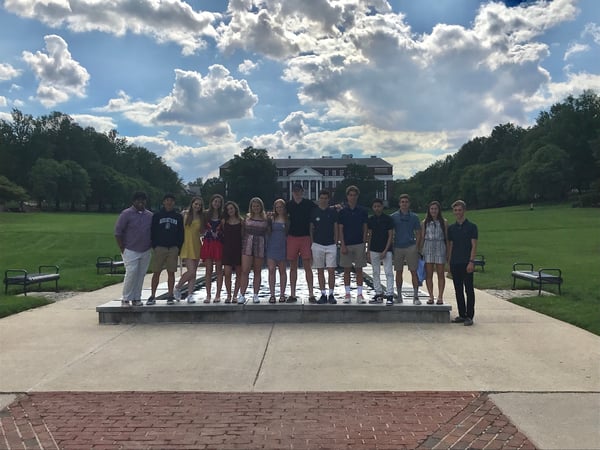 Did you know there are over 5,000 institutions of higher education in the United States? I was reminded of this fact during the recent college tour through the Mid-Atlantic. On this trip, 14 Tabor students, along with Chris Rorke, college counselor, and yours truly, had the chance to see seven different colleges over the course of three days. A whirlwind trip to be sure, it served as an introduction for the students (and welcome reminder for me) of the plethora of options available in the United States. Students also learned about the importance of finding the institutional type that will best fit and support their unique personalities and academic/extracurricular aspirations. It was a productive start to the summer for all of us.
Did you know there are over 5,000 institutions of higher education in the United States? I was reminded of this fact during the recent college tour through the Mid-Atlantic. On this trip, 14 Tabor students, along with Chris Rorke, college counselor, and yours truly, had the chance to see seven different colleges over the course of three days. A whirlwind trip to be sure, it served as an introduction for the students (and welcome reminder for me) of the plethora of options available in the United States. Students also learned about the importance of finding the institutional type that will best fit and support their unique personalities and academic/extracurricular aspirations. It was a productive start to the summer for all of us.
 Often, in their quest to identify institutional fit, Tabor students consider a relatively small range of options in their search, focusing most intently on research universities and liberal arts colleges. However, even when narrowing the scope to include these two types of institutions, the landscape sometimes becomes confusing as students work to understand the fundamental differences between these two major categories. In an attempt to help clarify some of that confusion, I offer you a broad overview of research universities and liberal arts colleges.
Often, in their quest to identify institutional fit, Tabor students consider a relatively small range of options in their search, focusing most intently on research universities and liberal arts colleges. However, even when narrowing the scope to include these two types of institutions, the landscape sometimes becomes confusing as students work to understand the fundamental differences between these two major categories. In an attempt to help clarify some of that confusion, I offer you a broad overview of research universities and liberal arts colleges.
Before getting into the specifics, a brief disclaimer. As with any categorization, one runs the risk of generalizing, which is not my intent. It is important to recognize that while research universities often share many common traits, there can be major differences among and between institutions within this category. The same applies to liberal arts colleges. All of this to say, it is necessary to complete in-depth research regarding specific institutions to ultimately determine fit.
Research Universities (RUs)
- Typically medium-to-large in size (5,000-50,000 or more students) and offer both undergraduate and graduate programs.
- As the name suggests, research is heavily emphasized across all academic disciplines. Professors are encouraged/rewarded for pursuing research, often with the support of graduate students. However, undergraduate students also have opportunity to engage with research, collaborating with graduate students and professors in labs and on projects.
- Class sizes tend to be larger during freshman and sophomore years, often with graduate student teaching assistants serving as proxies for professors.
- Comprised of specific colleges that focus on a particular area of study. Examples include a College of Arts and Sciences, a College of Engineering, a College of Business, and a College of Nursing. When a student applies to a RU, they will indicate a specific college (or two or three) in which they hope to enroll.
- There exists a broad range of possible majors available for students to pursue at these institutions. However, given the size of many RUs, it can be difficult to change a major without that change impacting the number of years needed to graduate.
- Due to the prevalence of academic research taking place, RUs often provide access to some of the most up to date and cutting-edge technological and academic facilities.
Liberal Arts Colleges (LACs)
- Tend to be smaller in size (5,000 students or less).
- Most are solely undergraduate institutions, meaning they offer no (or very few) graduate level programs.
- There is emphasis on undergraduate learning and development.
- Given their relatively small size, students can expect a more individualized experience. Class sizes can range from five-60, with most classes averaging around 15-20.
- There are typically no graduate student teaching assistants, meaning that undergraduate students can expect to be taught by professors for all four years.
- Prospective students do not apply to a specific college. Rather, they apply directly to the college and indicate an academic major (or two or three) of interest.
- Offer a well-rounded curriculum that emphasizes interdisciplinary learning, critical and analytical thinking skills, writing, and effective communication throughout a student’s four years.
- Emphasize the importance of experiential learning, offering students numerous research and internship opportunities.
As you review some of the general differences between research universities and liberal arts colleges, it is obvious there are amazing educational opportunities that exist at both. So, what type fits you best? Time and research will tell, but I hope this provides a good starting point as you begin (or continue) to assess the many incredible options that exist within the world of higher education today.
- Anna Barlow-Boesch, Assoc. Dir. of College Counseling








